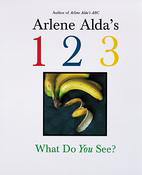I officially repent of all that I have ever said against children’s counting books.
When done right, counting books can be delightful, as evidenced by Ten Little Wishes: A Baby Animal Counting Book, Arlene Alda’s 1,2,3: What do you see?, and now Lena Anderson’s Tea for Ten

Tea for Ten tells the rhyming story of Hedgehog, feeling lonely, sitting at her table, wishing that her friends would drop by so “she wouldn’t be just ONE”. Thankfully, some of her friends do stop in–and Hedgehog prepares a sweet tea for ten.
Lena Anderson’s picture books have an endearing cast of characters that might be stuffed animals or might be real animals, but are cute and cuddly either way.
Both Hedgehog, Pig, and the Sweet Little Friend and Hedgehog’s Secret are entertaining and have delightful illustrations–but Lena Anderson’s crowning glory (in my humble opinion) is Tick-Tock.
Tick-Tock includes the same familiar characters as Anderson’s other books–but this is another teaching book. In fact, it’s a counting book of sorts.
The story begins at one o’clock, with Uncle Will taking a string of youngsters to the park. At two, they climb a tree. At three, someone falls off the tree. At four… And so the story goes. At seven o’clock, the kids get ready for bed. Every hour afterward, at least one youngster wakes up for one reason or another–until at last the clock strikes twelve and Uncle Will falls asleep in exhaustion.
Like the rest of the books, Tick-Tock is told in rhyme. It’s a short book, but fun–and the illustrations are perfect. Each page has a clock face on it, with the hands pointed at the appropriate time and the numeral for the hour beside it. This is a perfect book for teaching numbers and the basics of telling time.
For more comments on children’s books (counting and otherwise), check out Carrie’s blog Reading My Library, which chronicles her and her children’s trip through the children’s section of their local library.



